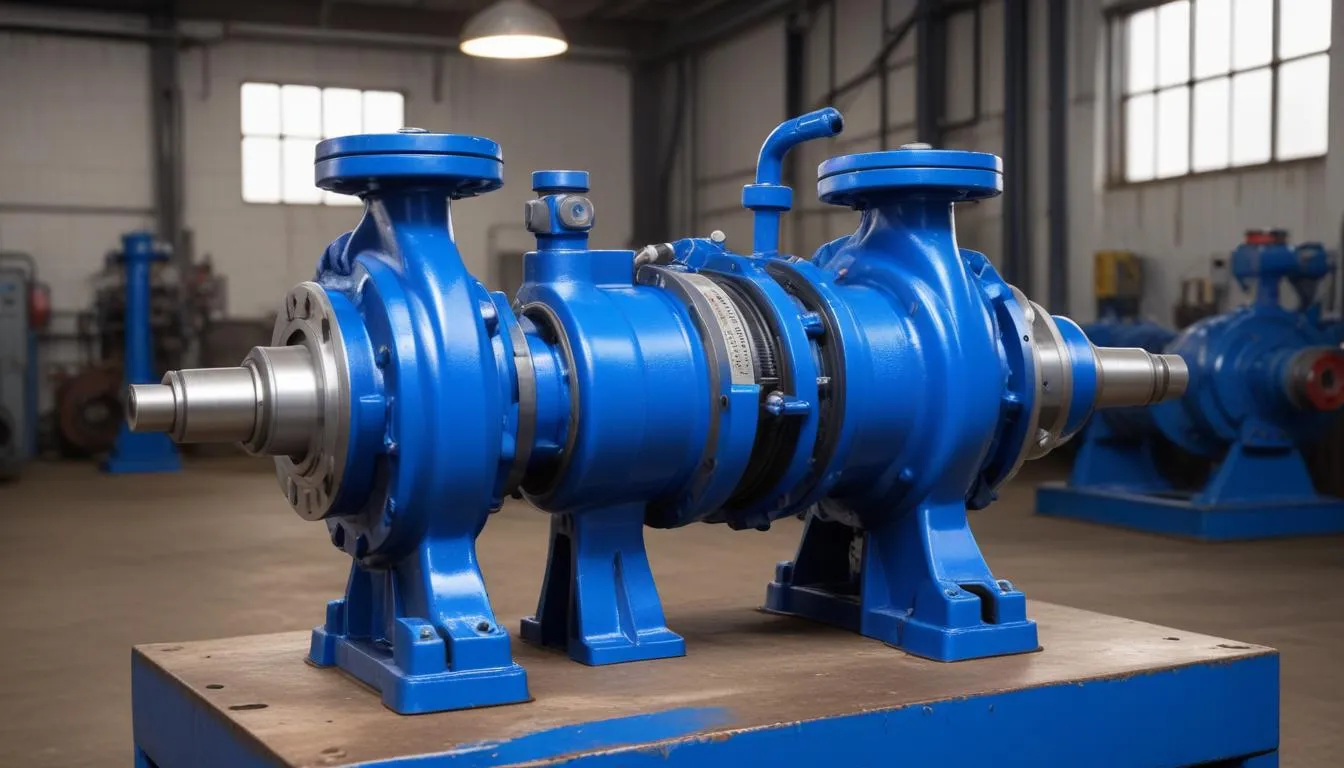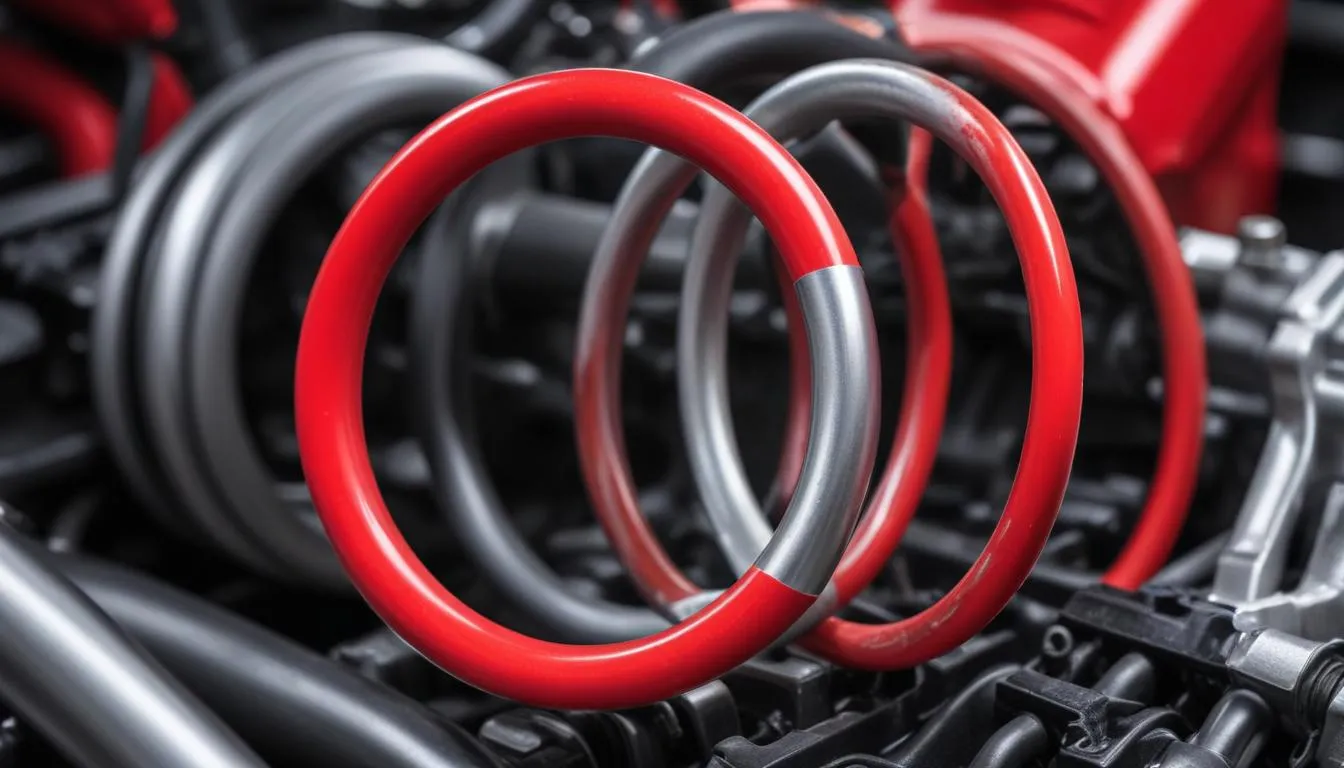 Sealing technologies are critical components in various industrial processes, particularly in the operation of pumps. These technologies are designed to prevent fluid leakage, maintain pressure within systems, and protect the integrity of machinery. Understanding these technologies is essential for selecting the right sealing solutions to meet specific operational demands.
Sealing technologies are critical components in various industrial processes, particularly in the operation of pumps. These technologies are designed to prevent fluid leakage, maintain pressure within systems, and protect the integrity of machinery. Understanding these technologies is essential for selecting the right sealing solutions to meet specific operational demands.
There are several key aspects to consider when exploring sealing technologies:
- Functionality: Each sealing technology operates differently, depending on the application it serves. For example, dynamic seals are designed for moving parts, while static seals are used in stationary applications.
- Material composition: The choice of materials influences the performance and longevity of sealing solutions. Common materials include elastomers, fluoropolymers, and metals, each offering unique benefits in terms of chemical resistance and temperature tolerance.
- Environmental conditions: Factors such as temperature, pressure, and the nature of the fluids being sealed (corrosive, viscous, etc.) are crucial in determining the suitability of sealing technologies.
Moreover, the selection criteria play an essential role in choosing the appropriate sealing technology. It involves evaluating the operational requirements and matching them with the capabilities of different sealing materials. Key selection criteria include:
- Service conditions: Assess the operating conditions in which the sealing technology will be deployed.
- Compatibility: Ensure that the sealing material can withstand the fluid it will contact.
- Installation and maintenance: Consider ease of installation and the potential need for ongoing maintenance.
- Cost-effectiveness: Analyze the total lifecycle costs, including material costs and potential downtime.
By comprehensively understanding sealing technologies, industries can make informed decisions to optimize the performance of their pumps and other equipment, ensuring operational efficiency and minimizing downtime due to leaks or failures.
Types of sealing materials
Sealing materials play a pivotal role in the performance and reliability of sealing technologies used across various applications. Each type of material offers distinct advantages and disadvantages, making it essential to understand their properties when making informed choices. Below are the primary classifications of sealing materials:
- Elastomers: These are rubber-like materials known for their flexibility and resilience. They are commonly used in O-rings and gaskets. Key characteristics include:
- Chemical resistance: Varies by elastomer type; for example, EPDM performs well in weather and ozone exposure, while Viton is ideal for aggressive chemicals.
- Temperature tolerance: THey can typically withstand a range of temperatures, with silicone elastomers excelling in high-temperature applications.
- Fluoropolymers: Known for their remarkable chemical resistance and thermal stability, fluoropolymers are frequently used in high-performance sealing applications. Examples include PTFE (Teflon):
- Low friction properties: Fluoropolymers provide excellent lubrication, reducing wear and tear.
- Wide temperature range: They can operate effectively in environments with extreme temperatures.
- Metals: Used primarily in applications requiring high strength and durability, metallic seals, such as those made from stainless steel, are essential in high-pressure environments:
- Mechanical strength: Metals can withstand significant stresses, making them suitable for challenging industrial conditions.
- Heat resistance: They provide excellent stability when exposed to high temperatures, as seen in turbine or engine applications.
- Composite materials: These combine multiple materials to exploit the strengths of each. Composite seals may include layers of elastomers and metals, providing versatility in performance attributes:
- Enhanced performance: They offer better sealing capabilities against a broad spectrum of challenges like chemical exposure and high pressures.
- Cost-efficient: Often provide high performance at a reduced weight compared to all-metal options, potentially lowering operational costs.
When selecting sealing materials, it is crucial to align the material’s properties with the selection criteria relevant to the intended application. Factors such as compatibility with fluids, operational pressures, and environmental conditions must be evaluated thoroughly to prevent premature failure and enhance the longevity of pumps and other machinery. Understanding these types of sealing materials will empower engineers and maintenance professionals to select the best options suited for their specific needs.
Factors to consider in selection
When selecting sealing technologies, it is vital to carefully evaluate several factors that can influence the effectiveness and reliability of these components in your application.
Operational environment is one of the foremost considerations. The temperature and pressure within the environment directly affect the integrity of the seals. For instance, high-pressure systems may require sealing solutions that can withstand significant stress, while high-temperature conditions may necessitate materials that exhibit superior thermal stability.
Equally important is the chemical compatibility of the sealing material with the media it will encounter. For example, if the application involves aggressive chemicals, selecting materials like fluoropolymers, which demonstrate excellent resistance to a variety of acids and solvents, becomes essential in preventing premature deterioration.
Moreover, the mechanical design of the sealing solution must align with the equipment’s specifications. This includes considerations such as the sealing geometry and how it fits with moving or stationary parts. Selecting the correct type ensures optimal pressure retention and leakage prevention.
Another critical factor is the installation process. Some sealing technologies require specialized installation techniques or tools, which can add complexity and potential costs. Ease of installation should be balanced with the need for a secure fit to ensure long-lasting performance.
In addition to installation, ongoing maintenance requirements must be assessed. Regular checks and replacements play a significant role in the performance of sealing technologies, especially in demanding applications like pumps where wear and tear are prevalent. A solution that requires frequent maintenance might not be ideal for facilities aiming to minimize downtime.
Finally, the overall cost-effectiveness of sealing solutions should not be overlooked. It is essential to analyze not only the initial purchase price but also the long-term costs involved in maintenance, potential downtime, and efficiency loss due to incompatible materials or designs. A lower-cost option may seem attractive initially, but if it leads to frequent failures or replacements, the total cost could exceed that of a higher-quality solution.
By considering these factors, engineers and procurement officers can make informed decisions about sealing technologies, ensuring that the right selection criteria are met to enhance performance and reliability in their applications.
Application-specific sealing solutions
 Application-specific sealing solutions are designed to meet the unique demands of various industries and applications, ensuring optimal performance and reliability. The selection of appropriate sealing technologies is critical, as each application presents distinct challenges and requirements.
Application-specific sealing solutions are designed to meet the unique demands of various industries and applications, ensuring optimal performance and reliability. The selection of appropriate sealing technologies is critical, as each application presents distinct challenges and requirements.
For instance, in the automotive industry, sealing solutions need to withstand high temperatures and extreme pressures. Here, O-rings and gaskets made from durable elastomers such as Nitrile rubber or Silicone are commonly used to prevent fluid leaks in engines and transmissions. Key considerations include:
- Temperature resistance: Ensure that materials can perform without degradation at high engine temperatures.
- Oil and fuel compatibility: The sealing materials must resist oil and fuel exposure to maintain integrity and prevent failure.
In oil and gas industries, where severe environmental conditions are prevalent, metallic seals or composite seals are often employed. These solutions are typically utilized in high-pressure and corrosive environments, requiring:
- Corrosion resistance: Choose materials like stainless steel or specially coated alloys to endure harsh chemicals.
- Mechanical strength: Seals must maintain their integrity under significant pressure to secure against leaks.
The pharmaceutical sector requires sealing solutions that adhere to strict cleanliness and biocompatibility standards. In these applications, PTFE (Teflon) gaskets and seals are preferred due to their non-reactive nature. Important considerations include:
- Cleanroom compatibility: Seals should have minimal particle generation to maintain a sterile environment.
- Easy sterilization: Selecting materials that can be effectively sterilized without degrading is vital for maintaining regulatory compliance.
In HVAC systems, where efficiency and energy saving are paramount, high-performance elastomeric seals are utilized to reduce air leaks and maintain temperature control. Key factors include:
- Dynamic sealing capacity: Ensure that the chosen seals can tolerate movement without allowing leaks.
- Weather resistance: Materials should withstand varying temperature and humidity levels to maintain effectiveness over time.
When selecting sealing technologies for any specific application, it’s crucial to conduct a thorough assessment of the selection criteria based on operational needs. Evaluating the unique demands of each industry will aid in optimizing equipment performance and prolonging the lifespan of sealing solutions, reducing downtime and maintenance costs in the long run.
Engineers and procurement professionals must work closely to match the specified requirements with the appropriate technologies, ensuring that each sealing solution is tailored to the operational environment it will face.
Maintenance and troubleshooting tips
Regular maintenance of sealing technologies is essential to ensure their effective performance and longevity. Proper upkeep can prevent leaks, enhance efficiency, and minimize downtime, which is particularly crucial in industries relying on pumps and other machinery. Establishing a maintenance schedule tailored to the specific sealing materials and technologies in use is vital for sustaining operational efficiency.
Begin by conducting visual inspections of the seals and associated components. Look for signs of wear such as cracks, deformation, or discoloration, as these can indicate impending failure. Additionally, monitor for any fluid leaks around the sealing areas, as this is often the first visible sign of sealing technology failure. Addressing these issues promptly can often save significant costs associated with unscheduled downtime and repairs.
Implementing preventative maintenance protocols such as cleaning and lubrication can greatly enhance the life of seals. In environments where contaminants are present, regularly cleaning sealing surfaces can help prevent particle accumulation that could compromise the seal’s integrity. Depending on the sealing materials, the use of compatible lubricants may also be beneficial, as it can reduce friction and wear during operation.
When it comes to troubleshooting, understanding common issues associated with sealing technologies is fundamental. For instance, if leaks occur, investigate potential causes. These could include:
- Material incompatibility: Verify that the sealing material is compatible with the fluids being sealed. If not, replacement with a more suitable material may be necessary.
- Improper installation: Ensure that seals have been correctly installed according to manufacturer specifications, as misalignment or incorrect positioning can lead to seal failure.
- Over or under-tightening: Incorrect torque settings on fasteners can compromise seal integrity. Regularly check torque specifications to ensure they are within the recommended range.
It is also important to assess operating conditions. Fluctuations in temperature and pressure beyond the designed limits can lead to premature seal degradation. Monitoring environmental conditions can also provide insights into potential adjustments needed for higher reliability.
Keep an eye on the performance metrics of the equipment utilizing these sealing technologies. Metrics such as energy consumption, system pressure, and the frequency of seal replacements can signal potential issues that merit further investigation. By instituting an ongoing review of these metrics, operators can take proactive steps to mitigate the impact of failing seals before they lead to system malfunctions.
Finally, fostering communication with manufacturers or suppliers of sealing technologies can provide invaluable insights into maintenance best practices and troubleshooting strategies. Many manufacturers offer guidelines and support to help optimize the performance of their products, ensuring that selection criteria for sealing solutions are grounded in practical experience and proven outcomes. Following these maintenance and troubleshooting tips not only prolongs the lifespan of sealing technologies but also contributes to maintaining the overall efficiency of pumps and other key industrial processes.